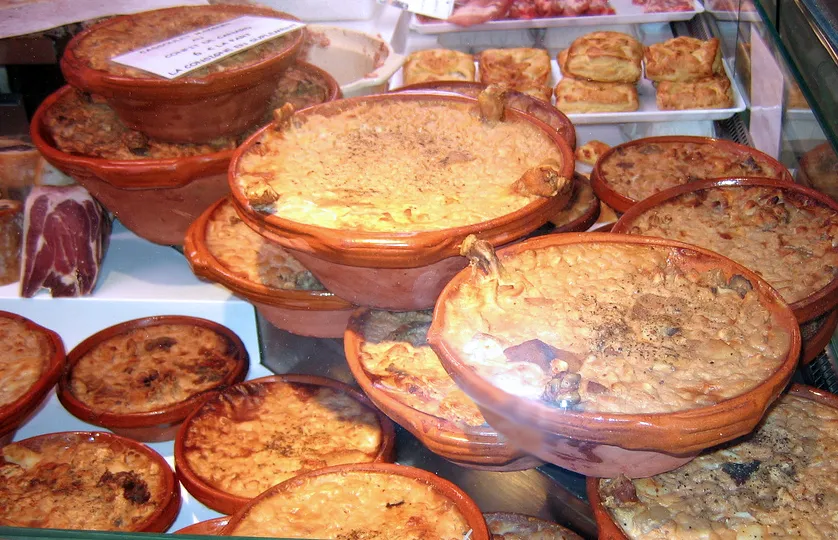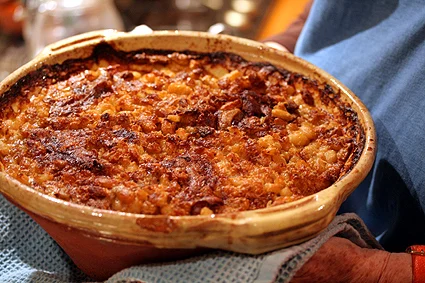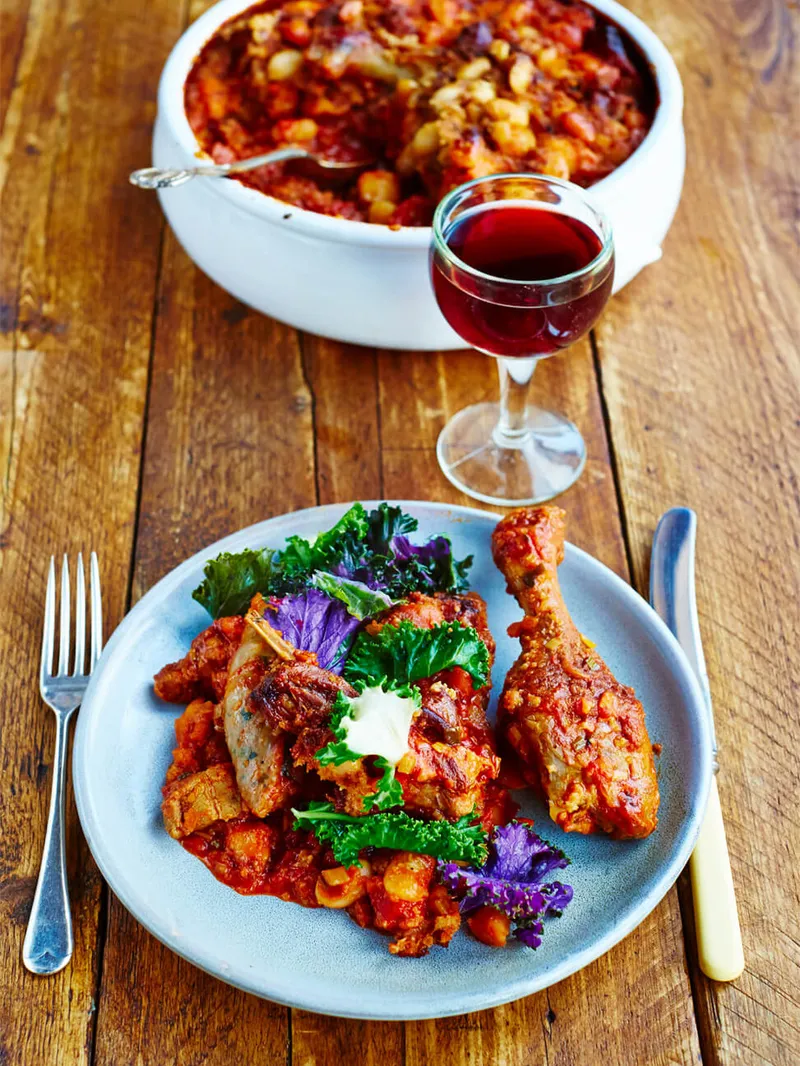Not a cassoulet - leftovers 3
- rosemary
- Nov 1, 2023
- 7 min read
"The cassoulet is a dish which may be infinitely varied so long as it is not made into a mockery with a sausage or two heated up with tinned beans, or with all sorts of of bits of leftover chicken or goodness knows what thrown into as if it were a dustbin." Elizabeth David

I suppose if I'm honest, this is exactly what I did with last night's leftover supper - a dish concocted from Hugh Fearnley-Whittingstall's Quick cassoulet recipe in his Love Your Leftovers book, that I mentioned the other day. Even he did say that he published the recipe with 'a mild sense of terror', because it is definitely not authentic. And Elizabeth David is always ready to put you down if you don't do exactly what the French would do. Well probably more exactly, what tradition dictates.
Nevertheless, as Hugh also says:
"it may not be authentic but it pays homage to the original while taking less than an hour (rather than a couple of days) to make - and it tastes great."
And above is my finished version, hot from the oven and, you know, it did indeed taste great and it did take less than an hour - about three quarters I would say. Authentic however it was not. It was not even as almost authentic as Hugh's version. He did at least have some bits of chicken to boost the sausages. I just had the sausages, and one slice of bacon that I chopped up. The beans did indeed come from the tin, and yes, there were bits of 'leftover goodness knows what' in there as well. The 'goodness knows what' components were the leftover sun-dried tomato tapenade, and the leftover vegetables and sauce from the chicken. No chicken though - as already posted - I used that for pasta. I also added a couple of skinned and chopped tomatoes, some red wine vinegar as suggested by Hugh and also some tomato purée. The top was covered in breadcrumbs and finished under the grill, there was no stirring them in and recooking/grilling as suggested in various authentic recipes, but they were gloriously crunchy, and I think the red vinegar too was a really good thing to add. In fact, in all modesty, I think it matched Nigel Slater's idea of what a cassoulet should be.

"The perfect cassoulet is one that sends wave after garlicky wave of warmth from the end of your tongue to the tips of your toes. The beans are held in just the right amount of herby, tomatoey goo, the breadcrumb crust is crisp, and the first mouthful piping hot. It should contain haricot or broad beans, some fatty pork, garlicky sausages and a thick breadcrumb crust." Nigel Slater
Well there was no fatty pork, just those few pieces of bacon - and the sausages which had been sliced into chunks. Oh and the beans were cannellini - from the tin. There is no picture of his version - this one is from Melissa Clark in The New York Times, but I have to say it doesn't look all that different from mine.

Once upon a time, in my enthusiastic, diligent, learning to cook properly days I did indeed make an authentic cassoulet. I think I used Julia Child's recipe, so I checked out Jamie and Julia and indeed he has a go at it. The picture sort of says it all. It's a long video - just over half an hour - so I just provide the link in case you've got nothing else to do. Well it is indeed a long process. It took him from 11.00 in the morning to 9.00 at night, without a break, and during which he said he used every pan in the house, and that doesn't include the overnight soaking of the beans and the marinading of the pork. On the plus side he seemed to think the end result was delicious - he had a second helping, but I suspect that, like me, he won't be making it again. Moreover the quantities are huge. You really only should make this - if you do at all - if you are cooking for a big crowd. So you also need a pretty huge dish. I think I used a dish which I bought in Daimaru for the purpose, and which has possibly never been used again.
The other thing that one commentator remarked upon was that you also get involved in a lot of difficult shopping, unless you live in France. Even today. Depending on which recipe you are using you may need to find Toulouse sausages, confit duck, or preserved goose plus bacon in a chunk - maybe even a partridge or two.
"that sumptuous amalgamation of haricot beans, sausage, pork, mutton and preserved goose, aromatically spiced with garlic and herbs, is cooked at great length in an earthenware pot, emerging with a golden crust which conceals an interior of gently bubbling, creamy beans, and uniquely savoury meats." Elizabeth David
And by the way, of the commentators I checked out, none of them seemed to like the idea of lamb - too overpowering a taste they said. In fact cassoulet is perhaps the best example of how a peasant dish - made from whatever was available - has become such a passionately protected and argued about dish. There is of course a society with rules. However, those rules will change depending in which one of those towns that line the autoroute from Narbonne to Toulouse you are eating. The meat varies, the beans vary, tomatoes? the liquid and that crust of breadcrumbs. Do you have the breadcrumbs, do you keep pushing them down ...? Even Felicity Cloake who, of course, had a go at the perfect cassoulet, says that the beans in particular are important:
"beans can make or break a recipe, as Jeanne Strang explains in Goose Fat and Garlic: "The essence of a good cassoulet is that the beans, while not falling apart, should be tender and should have absorbed the aromas and savours of the other ingredients."
As I said, back when the dish was born, it was just whatever the individual housewife had to hand, and then she put it in the pot and took it to the baker to cook in his wood fired oven. Now if you are in France you can buy it in a jar in the hypermarket or in an earthenware pot in one of those wonderful traiteur shops.
And one last comment on the authentic. Most of them will say to put in some pork rind, and I have to say that here I agree with Felicity Cloake who says:
"the rind, even when used to line the base of the dish, as many recommend, is not the most pleasant thing to come across in a mouthful, managing as it does to be simultaneously blobby and chewy."
Moreover, poor Jamie, following Julia's instructions, cut his rind into tiny pieces and cooked it with the beans, but they did not melt and so he took out every last little piece from the beans by hand!
I have eaten genuine cassoulet in restaurants in France, but mostly have been somewhat disappointed, as I was by my own 'perfect' version way back in the past. Because it really is fundamentally a peasant dish created out of relatively poor ingredients cooked very slowly and designed to sustain people who spent hours and hours doing hard labour in the fields. Dare I say it's marginally stodgy? It's not just the English who do stodgy.

Now my dish, shown here, was possibly at the extreme end of the quick cassoulet, cheating options and I suppose in Elizabeth David's eyes was indeed a sort of dustbin. One wonders whether she ever had to deal with a fridge of stuff that needed using. Because when I think about her books they are mostly recipes that she has collected rather than invented. She was trying to open our dull old English eyes, to the wonderful foods that were eaten elsewhere. And she did and I shall be forever grateful - indeed my leftovers no.4 dish tonight, is going to be based on her Pizza al tegame recipe (Fried pizza). Not exactly though because of the leftovers that are involved. Did she ever have leftovers? I can imagine her just tossing them into the bin.
But these days we are very much into using up leftovers, and taking shortcuts? Because of her, and her contemporaries we are all so familiar with those once exotic dishes, that they are served in pubs and found in the freezer cabinets of the supermarket. So the celebrity chefs have to produce something that's either completely new or which builds on those 'classics'.
Hence you will be able to find recipes for cassoulet, from the excruciatingly authentic to Hugh Fearnley-Whittingstall's super quick version, and everything in between. Below we have, probably in order of authenticity and care - Alain Ducasse - this is Michelin starred stuff, David Leibovitz, Coles Magazine and Hugh's cheating version. Plus - couldn't resist because of the reference to Essex, Jamie Oliver's Cassoulet de Essex. Never mind that that should have been d'Essex - but then I guess that's the point about Essex - or the popular view of Essex - enthusiastic but stupid. And actually his recipe looks pretty authentic, although he does use tinned beans - and tomatoes. They all look pretty good to me - no breadcrumbs on Alain Ducasse's version I see.
Well as Nigel Slater says:
"In practice, most cassoulet is good - I mean, how can you go wrong when unctuous meat and snowy white beans are left to simmer gently with garlic and herbs?" Nigel Slater
And Melissa Clark in The New York Times says much the same:
"As long as you have white beans slowly stewed with some combination of sausages, pork, lamb, duck or goose, you have a cassoulet." Melissa Clark/New York Times
I am old. I can no longer stand in the kitchen for hours without getting an excruciating backache, and so I cut corners, I look for the quick and easy, and besides I had to do something with those sausages. So 'slowly' is not part of the process. Thankfully, these days there are plenty of chefs out there who do much the same. Besides even if we can cook pretty good imitations at home, it's a really special treat to be able to eat the 'real' thing either somewhere along the autoroute A61 in France or in some posh French restaurant in Melbourne. Restaurants are there to do what we can't in my view.
"liberties should not be viewed as inadequacies." says Mark Bittman, and you know I was pretty pleased with my effort.














Comments